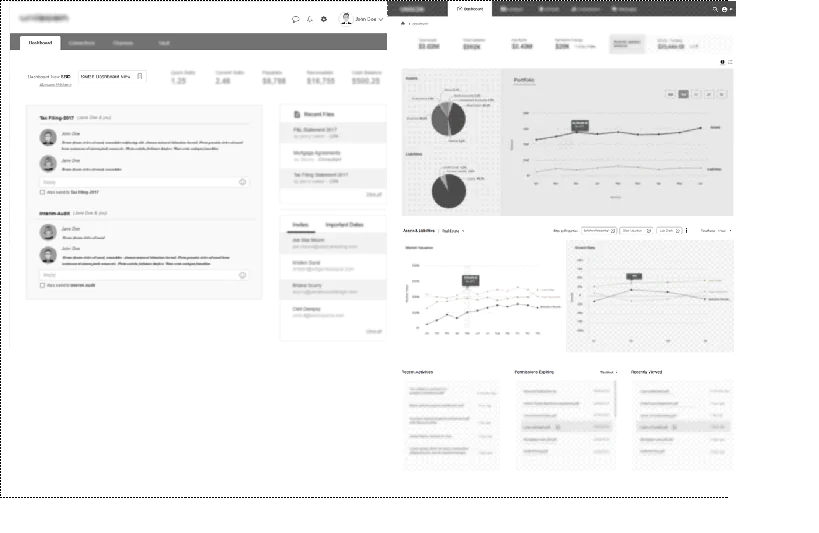
Prototypes are simulations of future UI. They help us define, communicate, and explore our key ideas and their variants. In this process it is critically important to validate our prototypes i.e. the concept and assumptions! Validation that really counts, is that coming from real users. The goal here is to understand early on whether the concept works for the users and solves their problem. It also helps in getting insights into the user needs, behaviors and their motivation to use the product. Rapid prototyping can also be done for quick validation of the ideas. This includes forms like Paper prototypes, Storyboards, Whiteboard prototypes etc.
Prototype Validation – Steps towards a better product!

The above image depicts the key considerations for a successful concept.
Users understand the concept – Triggers (internal & external) as applicable are present and users are looking for solutions as we have conceptualised.
They want to use it – There is significant motivation and users are able to use it easily without much change in the habit or process that they are accustomed to.
Does it add value – The concept presents rewards that are satisfactory for the users to continue using this prototype.
Startups are usually in a hurry to build a minimum viable product (MVP) and have the users use it so that they can make an early discovery of any changes needed. In this process they need to guard against distraction. For example, while exploring the look and feel options, there is a danger of losing focus on functionality and usability. Startups also have various ideas and user stories to brainstorm which is a good starting point. But, it is very important to identify top 3 hypotheses on which we should design our initial prototype and validate the same.
The validated interactive prototypes help reflect and shape the concepts around the product. They help reduce 30% of the changes at MVP stage and let us see the finished product before it goes to the market.
Build, Validate and Learn feedback loop will always help create what the users want!
Validation Method
Testing with the real users is the most trusted and productive method of prototype validation. Observing the user behaviors and understanding their reactions when they talk through the prototype, helps eliminate subjective bias.
- Creation of Test Plan with Tasks
Create a comprehensive test plan clearly identifying the tasks to be completed. Ask open ended, broad brush questions related to the product concept. Avoid leading questions that hint at the answer. - Sampling the Users
For testing the prototype select individuals who best represent the target users of the product. Five to six is a good number so that their feedback will be representative, and will reasonably guard against any outlier opinion. These individuals should have demographics that represent different roles of the target users expected to use the product. - Conducting the Test
Prototypes can be tested both remotely using various screen capturing tools or in-person. Engage a facilitator with intimate knowledge of the user, who could intervene if necessary. Suggest users to think aloud as they navigate through the prototype. This helps uncovering their thoughts and reactions. It’s a good practice to have cross function observers to monitor these reactions. Note, categorize and evaluate observations to make appropriate changes in the prototype.

Each HR product is unique. It needs to communicate with many other products in the HR ecosystem. With our HR Tech and UX expertise, Harbinger Systems can help you create the right strategy towards success of your MVP.
Our success stories
Validating and iterating several times at prototype stage instead of MVP stage is a cost effective approach. Harbinger Systems has put this approach to use with great effect while partnering with numerous startups. Collaboration and partnership right from the conceptualization stage has helped us grow the ideas from MVP to full-fledged products within a short span. Probability of success of MVP has increased for our customers due to investment in prototype validation phase. We have not experienced any throw-away prototype since the use of this method. We have also seen startups take this approach while pivoting to a new idea.
Here are some examples of how prototype validation techniques described earlier resulted in winning products.
Dashboard – before and after prototype validation
The dashboard prototype designed initially showcased status and comments around tax filing and interim audit. Invites, important dates and recent files were some of the widgets on the Dashboard. But, the validation findings revealed that the core objective of the users was to take quick financial decisions and track the portfolio. The dashboard was transformed to a more informative design by making all the required information, including assets composition, readily available. Widgets like Assets, Liabilities snapshots with graphical overview of the portfolio were added.

User connections screen – before and after prototype validation
The connections were displayed for each role in a separate tab in the initial prototype. User interaction with the prototype revealed that they were keen to have active connections shown in a single tab where associated roles/relations are shown against each connection. Also, the number of connections for each role could be as low as 1 or 2 thus leaving the screen blank with just 2 records. The validations helped in redesigning of connections which significantly enhanced the usability.

To summarize, selecting representative real users, creating an elaborate task plan, asking the right questions, engaging a knowledgeable facilitator, and finally keenly observing the user behavior to effect changes leads to great prototypes.
Prototype validation helps design solutions that customers are looking for in minimal time frame and without any development cost!
We would love to hear from you about your own prototype validation stories for enriching the user experience of the new products.






